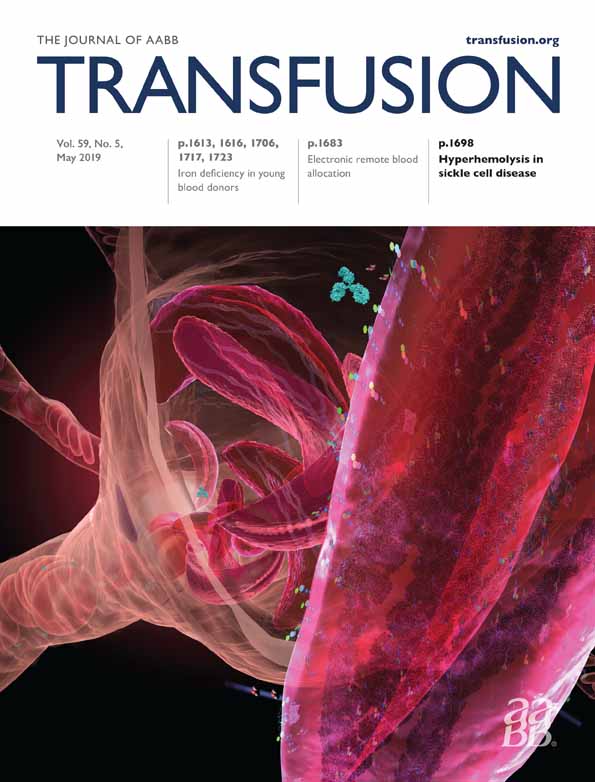Efficacy of a new pathogen-reduced cryoprecipitate stored 5 days after thawing to correct dilutional coagulopathy in vitro
Abstract
BACKGROUND
Fibrinogen supplementation during bleeding restores clot strength and hemostasis. Cryoprecipitate, a concentrated source of fibrinogen, has prolonged preparation time for thawing, a short shelf life resulting in frequent wastage, and infectious disease risk. This in vitro study investigated the efficacy of a new pathogen-reduced cryoprecipitate thawed and stored at room temperature for 5 days (PR Cryo) to treat dilutional hypofibrinogenemia, compared to immediately thawed standard cryoprecipitate (Cryo) or fibrinogen concentrate (FC).
STUDY DESIGN AND METHODS
Ten phlebotomy specimens from healthy volunteers were diluted 1:1 with crystalloid and supplemented with PR Cryo and Cryo (at a dose replicating transfusion of two pooled doses [10 units]) and FC at a dose replicating 50 mg/kg. Changes in clot firmness (thromboelastometry) and in coagulation factor activity were assessed at baseline, after dilution, and after supplementation.
RESULTS
Clinical dosing was used, as described above, and consequently the FC dose contained 24% and 36% more fibrinogen versus PR Cryo and Cryo, respectively. At baseline, subjects had a median FIBTEM maximum clot firmness of 13.5 mm, versus 6.5 mm after 50% dilution (p = 0.005). After supplementation with PR Cryo, a median FIBTEM maximum clot firmness of 13 mm was observed versus 9.0 mm for Cryo (p = 0.005) or 16.5 mm for FC (p = 0.005). Median factor XIII was higher after PR Cryo (64.8%) versus Cryo (48.3%) (p = 0.005). Fibrinogen activity was higher after FC (269.0 mg/dL) versus PR Cryo (187.0 mg/dL; p = 0.005) or Cryo (193.5 mg/dL; p = 0.005); the difference between PR Cryo and Cryo supplementation (p = 0.445) was not significant.
CONCLUSION
PR Cryo used 5 days after thawing effectively restores clot strength after in vitro dilution.
CONFLICTS OF INTEREST
MC is a consultant for Cerus Corporation, Instrumentation Laboratory, and Octapharma. TH has received lecturer's fees and travel support from Octapharma and Instrumentation Laboratory and is a consultant for Octapharma. LA has received lecturer's fees and travel support from CSL Behring and Instrumentation Laboratory.




